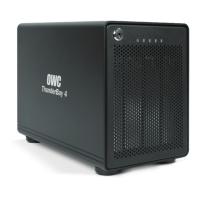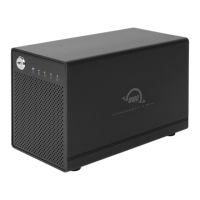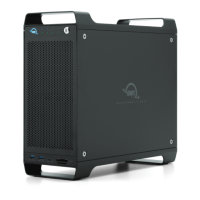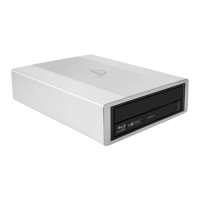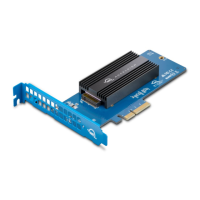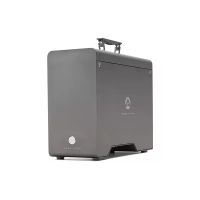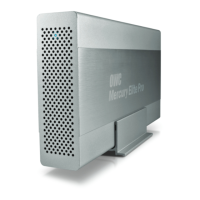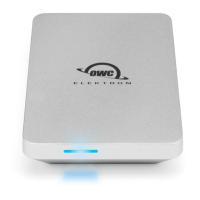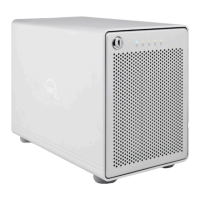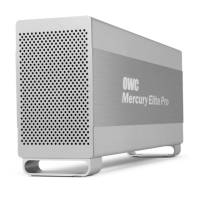ThunderBay 8
Introduction
4
1.6 Usage Notes
- Thunderbolt device chains can support up to six Thunderbolt devices.
- By using the DisplayPort feature, the overall performance of the drive may decrease somewhat,
as the DisplayPort shares bandwidth with the Thunderbolt 3 ports. The same is true if you
connect a display to one of the available Thunderbolt 3 ports (this can be done with either a native
Thunderbolt 3 display or with a Thunderbolt 3 display adapter).
- Thunderbolt 3 is backwards compatible with Thunderbolt 2 and Thunderbolt, but speeds can
be impacted depending on where in the chain a device is connected. If mixing Thunderbolt 3
with Thunderbolt 2 and/or Thunderbolt devices, use the device order shown below, if possible.
Computer > Thunderbolt 3 devices > Thunderbolt 2 devices > Thunderbolt devices
- To ensure no data is lost during normal use, always eject or unmount the corresponding disk(s)
from your operating system before powering off the device. Several options are provided below for
Mac and PC.
macOS
- Drag the icon for the disk you wish to unmount to the trash can; OR
- Right-click the disk icon on the desktop, then click “Eject”; OR
- Highlight the disk on your Desktop and press Command-E.
Windows
1. Go to the System Tray (located in the lower right corner of your screen). Click on the “Eject” icon (a
small green arrow over a hardware image).
2. A message will appear, detailing the devices that the “Eject” icon controls, i.e., “Safely remove...”
Click on this prompt.
3. You will then see a message that says, “Safe to Remove Hardware.” It is now safe to disconnect the
ThunderBay 8 from the computer.
- The steps above are applicable to Windows 10 build 1803 and earlier. If you are using Windows 10
build 1809 (October 2018) or later, you can eject the drive by clicking the ‘Show hidden items’ menu
in the Taskbar, then clicking ‘Safely Remove Hardware and Eject Media’, and last select the ‘Eject’
option for this volume.
